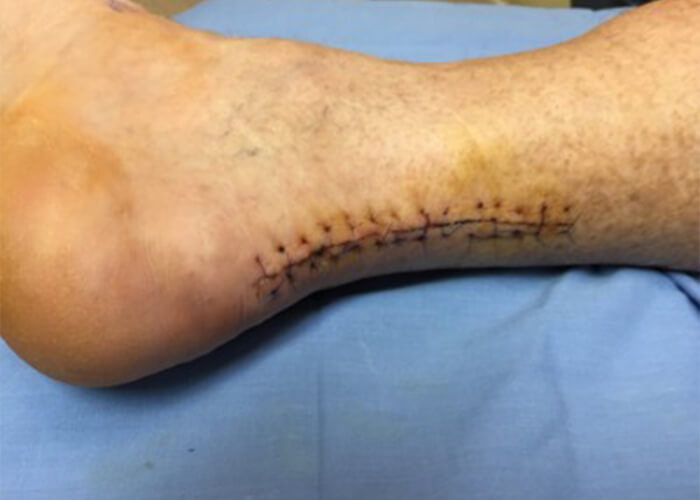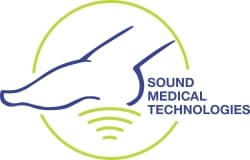Extracorporeal Shock Wave Therapy for Shoulder Tendonitis, Pittsburgh Pa
ESWT Shoulder Treatment
What is extracorporeal shock wave therapy and how does it work?
Extracorporeal Shock Wave Therapy, also referred to as ESWT, is a nonsurgical method that delivers high-energy acoustic (sound) waves to a targeted area in order to to treat various musculoskeletal conditions, including shoulder tendonitis.

ESWT works in 3 ways:
Desensitization
Local anesthesia is administered prior to the procedure. However, the ESWT is a very powerful machine, and the targeted area will become increasingly desensitized throughout the procedure.
It changes a chronic injury into an acute injury
Chronic injuries occur from overuse of an area of the body over an extended period of time. Shoulder tendonitis is an example of chronic injury.
Vascularization
During the ESWT procedure, microscopic and controlled injuries are induced. These injuries “jump start” the overall healing process by promoting the growth of new blood vessels in the shoulder tendon (vascularization), and giving your body the tools that it needs to heal itself naturally.

Benefits of ESWT vs. Surgery
ESWT is a non-invasive procedure requiring only local anesthesia to the targeted treatment area.
- Surgery is an invasive procedure where you will need to be placed completely under general anesthesia.
ESWT has little to no downtime, other than not participating in overly strenuous activities for 2 months following the procedure.
While ESWT is not covered by most insurance companies, it is cost effective.
- Surgical procedures can be very expensive, especially if a patient has a high deductible or poor health care coverage.
ESWT Shoulder Treatment FAQs:
Why is the shoulder so easily injured?
The shoulder is the most mobile joint in the body, and therefore the least stable. When comparing the ranges of motion of joints like the elbow and hip with that of the shoulder, this difference becomes obvious. Unlike the joints above, the shoulder isn’t very well protected, and is held together almost entirely by soft tissue such as ligaments and tendons. Through sudden trauma or chronic overuse, these soft tissue structures are almost always what are involved in shoulder injuries. Almost all of our Pittsburgh ESWT shoulder pain patients have some variation of tendonitis or bursitis, rotator cuff problems, ligament or tendon tear, joint separation, laxity, or extremely bad sprains and dislocations—all of which are soft tissue injuries.
What are some of the most common shoulder injuries?
Below are a list extremely common shoulder injuries we’ve treated in our Cranberry ESWT shoulder pain patients. Again, note that these are all soft tissue injuries (involving ligaments and tendons).
Tendonitis:
This is the medical term for inflammation or irritation of a tendon. Tendons are the thick, fibrous connective tissue bands that connect muscles to joints—the most widely known example is the Achilles tendon, which connects the calf muscles across the ankle joint. This is a chronic condition usually resulting from months or years of repetitive motions in athletics or work. Tendonitis is usually felt as a pain or tenderness just outside of a joint, which usually worsens with movement. In advanced stages the pain can be constant and severe. Two forms of tendonitis in the shoulder are so common that they deserve special mention. Other forms occur, but most of our Pittsburgh ESWT shoulder tendonitis patients present with these.
Bicipital Tendonitis—this involves the tendon of the biceps muscle, which is responsible for flexing the arm. The top of the arm bone (humerus) has a notch in front through which the biceps tendon runs known as the bicipital groove. The bottom of the groove provides a perfect hard surface for repeated rubbing leading to tendonitis.
Supraspinatus tendonitis—this involves the tendon of the supraspinatus muscle, a rotator cuff muscle which is partially responsible for raising the arm from the side. When our New York ESWT shoulder pain patients say “I have tendonitis,” this is usually what they’re referring to. Much like bicipital tendonitis, the supraspinatus tendon is in an extremely vulnerable location, in this case directly between the rough outer part of the humerus and the underside of the collarbone. Whenever the arm is raised to the side, the supraspinatus tendon can be caught between these bones and cause tendonitis over time. This form of tendonitis in particular tends to worsen without treatment.
Bursitis:
A bursa is a small, fluid filled sac which acts as a cushion in joints throughout the body. Bursitis is a chronic inflammation or irritation of these sacs. This condition is closely related to supraspinatus tendonitis above, and most of our Philadelphia ESWT shoulder patients present with both. Directly below the very end of the collarbone where the supraspinatus tendon runs is a bursa which is intended to protect the tendon. Often, both the tendon and the bursa become chronically irritated.
AC (AcromioClavicular) Joint Separation:
This is what people typically mean when they say they’re “separated their shoulder.” Note that this injury is actually a severe sprain, and the joint is very rarely pulled apart. The AC joint joins the very end of the collarbone to the front of the shoulder blade. Any sudden trauma can sprain the AC joint, but it most commonly occurs during a fall-on-out-stretched-hand (FOOSH), meaning when a person falls and catches themselves. AC separations in our Pittsburgh Shockwave shoulder patients can cause pain directly, cause popping and clicking, and contribute to other shoulder injuries.
Frozen Shoulder
Just like it’s name, when you have a frozen shoulder you can’t move your shoulder at all, since it becomes immobile. This condition is most common in people over the age of 40.
There are not many causes of frozen shoulder but most of the time it appears after your shoulder haven’t moved properly for a long time.
This can happen while healing from a shoulder injury, since during recovery moving any part of body is so painful so patients avoid moving but this can result into frozen shoulder as well.
The only symptom of frozen shoulder is not being able to move your shoulder after any kind of injury.
Furthermore, there are some risk factors of it too, some of them include:
- Thyroid patients
- Heart patients
- People suffering from Parkinson’s disease
- Diabetics
Frozen shoulder can take away or reduce your shoulder’s flexibility therefore it’s better to get a therapy like EWST to treatment the problem and make you shoulder flexible again.
Dislocated Shoulder
Another scary and painful shoulder condition in which your shoulder joint is dislocated from its place which may make your shoulder unable to work.
Dislocated shoulder is a common problem between physically active teens or adults since it most common causes of it are intense sports.
If you play sports too often then you are develop this problem, however falling from a high place or any other injuries can also cause this problem.
Its symptoms include:
- Shoulder that looks deformed from outside
- Swelling and redness
- Intense pain
- Not being able to move your shoulder
When you develop a dislocated shoulder then your neck and other nearby body parts can get affected as well. for example, you may experience numbness Or weakness in your neck or arm.
This kind of problem can be an emergency so get the right treatment before it gets worse.
Are there any situations where ESWT for the shoulder may not be recommended?
Yes, there are certain situations where ESWT (Extracorporeal Shockwave Therapy) for the shoulder may not be recommended. These include:
- Acute shoulder injuries: ESWT is generally not recommended for acute shoulder injuries, such as recent fractures, dislocations, or severe tears, as immediate medical intervention or surgery may be more appropriate.
- Open wounds or infections: If you have an open wound or an active infection in the area to be treated, ESWT may be contraindicated to prevent the spread of infection or interference with wound healing.
- Bleeding disorders or anticoagulant use: Individuals with bleeding disorders or those taking anticoagulant medications may be at increased risk of bleeding or hematoma formation at the treatment site, making ESWT less suitable.
- Pregnancy: Due to limited research on the safety of ESWT during pregnancy, it is generally avoided as a precautionary measure.
- Pacemakers or other implanted devices: ESWT involves the use of electromagnetic or acoustic waves, which may interfere with the functioning of pacemakers or other implanted devices. Individuals with such devices may need to avoid ESWT or consult with their healthcare provider for further guidance.
- Certain medical conditions: People with certain medical conditions, such as cancer, nerve disorders, vascular diseases, or severe circulation problems, may require careful evaluation before undergoing ESWT.
How soon can I expect to experience improvement in my shoulder condition after ESWT?
The timeframe for experiencing improvement in your shoulder condition after ESWT (Extracorporeal Shockwave Therapy) can vary depending on various factors, including the severity of your condition and how your body responds to the treatment. In some cases, individuals may start noticing improvements within a few weeks after the initial treatment sessions. However, it’s important to note that the healing process and response to ESWT can be gradual, and it may take several weeks or even months to achieve the desired results.
Why are shoulder injuries challenging to treat?
We use our hands for countless reasons throughout the average day, and these hand motions rely on the shoulders to keep the hands in position. We’re constantly using our shoulders to a greater or lesser degree, and short of immobilizing the arm in a sling the shoulders rarely get a break. Coupled with the fact that the shoulder is the most mobile and complicated joint in the body this makes shoulder injuries notoriously challenging. This results in the various chronic soft tissue injuries our Harrisburg Shockwave Therapy patients come in with. Physicians who treat shoulder injuries know that these injuries are stubborn and tend to re-occur, especially without treatment.
What is the prognosis for the average shoulder injury? How is it likely to progress?
Most chronic shoulder injuries are overuse injuries. If nothing changes in a patient’s situation, these injuries tend to worsen over time without the proper treatment. A construction worker retiring or a tennis player who stops playing tennis are examples of situational change. Note that the majority of our Pittsburgh ESWT rotator cuff pain patients are athletes or people with demanding physical jobs.
When is surgery necessary?
Some of the most common (and painful) shoulder conditions like the ones described above don’t respond well to surgery. As always, surgery should be an option of last resort, considered only when all other less-invasive options haven’t worked. Shoulder surgery is generally regarded as risky and complex, and is usually only performed when something “breaks” such as a rotator cuff tear or bony fracture. This leaves many patients in a situation where their level of pain and disability are high yet surgery still isn’t a good option. We almost exclusively recommend that our Pittsburgh shoulder pain patients receive Shockwave therapy prior to surgery.
Does surgery work? How successful is it?
Shoulder surgery is notoriously complicated, since the shoulder is one of the most complex joints in the body. Many of our ESWT Philadelphia shoulder pain patients come to our offices in an effort to avoid surgery. As such, success rates for shoulder surgery are difficult to estimate.
What are the drawbacks of surgery? What are the potential complications?
Shoulder surgery carries the same risks as surgery for any other musculoskeletal condition, anywhere else in the body. Remember, any surgery basically opens the skin and removes or otherwise alters tissues which are there to perform an important function. Here is a non-exhaustive list of potential problems resulting from surgery (open or arthroscopic).
- Infection
- Damage to ligaments and tendons in the region, including the rotator cuff tendons.
- Scar tissue formation. This can complicate recovery and any future surgery which may be needed.
- Nerve and blood vessel damage
- Surgical failure. If surgery doesn’t work as planned, more surgery may be needed. This is one of the most important reasons to avoid shoulder surgery in the first place. Always look for less invasive options first.
What are some common non-surgical treatments for tennis elbow?
NSAIDs:
This stands for non-steroidal anti-inflammatory drugs. These common, over the counter drugs include ibuprofen, aspirin, and naproxen sodium. Tylenol technically isn’t an NSAID because it doesn’t eliminate inflammation, so it isn’t the first choice as a shoulder injury medication. Also note that drugs like Celebrex and Duexis are prescription NSAIDs. As a first-line option, we almost start our Harrisburg ESWT shoulder pain patients on a course of NSAIDs. Note that NSAIDs are not without side effects—the most common are stomach problems, even including stomach bleeding. Additionally, there is some evidence that long term NSAID use may inhibit healing.
Cortisone Injections:
The use of cortisone injections for shoulder injuries is controversial, despite their widespread use. Long term use is especially questionable. Cortisone is a steroid which is used as a potent anti-inflammatory, and it is always given by prescription. The steroids abused by weight lifters and strength athletes are entirely different—this kind is known as an anabolic steroid. Cortisone does appear to provide short-term relief in many patients, but there are many side effects. It’s an established fact that steroids inhibit healing, especially after several injections. It’s also generally accepted that long-term cortisone use weakens tissue, and actual tendon rupture is possible. As a treatment option our physicians prefer to avoid cortisone injections as a first line treatment for our Pittsburgh Shockwave Therapy shoulder patients.
Rest and relative rest:
This is almost always recommended first if possible, yet rest itself rarely leads to resolution or complete healing. This is a completely noninvasive tennis elbow treatment, and is often used along with NSAIDs and support braces. Some period of rest is necessary for our ESWT shoulder Harrisburg patients—it’s a very common sense approach to most chronic joint injuries. Relative rest is simply using the affected area less, and is often associated with braces and splints.
Compression Wrapping, Splinting, and Bracing:
These are other extremely common, completely noninvasive option. It’s another common sense option, but in reality there is very little evidence that wearing braces or splints works, and the shoulder is a very difficult joint to brace. Overall this type of treatment isn’t a good long term option. Generally our Erie ESWT shoulder pain patients don’t receive a brace as part of their care.
Physical Therapy:
Physical therapy can be effective in treating most common shoulder injuries, however it doesn’t always work and long-term results are questionable. Before surgery is considered, a course of physical therapy is almost always required. Depending on the case, our physicians sometimes refer Erie Shockwave Therapy shoulder patients to qualified local physical therapists.
Stretching:
This is also a commonly used treatment used by physical therapists. Almost any patient can tolerate stretching, and once instructed by the physical therapist stretching can continue at home. As with all at-home self care, a stretching regimen requires discipline and consistency. Overall, stretching is a good add-on to any tennis elbow treatment, and most of our Bridgewater ESWT shoulder pain patients have tried stretching in one form or another.
Occupational Therapy:
Occupational therapy has much in common with physical therapy. Much like physical therapy, both are exercise based. This type of exercise tends to focus on the types of repetitive motions common in extremely physical occupations such as construction work and the trades. Both physical therapy and occupational therapy have shown to be effective in some cases. As with physical therapy, many of our Cranberry Shockwave Therapy shoulder patients have been prescribed a course of OT.
Prolotherapy (Sclerotherapy)
This is also known as sclerotherapy. Medications designed to slightly irritate the affected tendons and ligaments are used in the hopes of stimulating the healing response. Prolotherapy is considered experimental and insurance isn’t likely to cover it.
Are there any holistic treatments for tennis elbow?
Several branches of holistic medicine claim to successfully treat tennis elbow, but none have proven effective. Examples include acupuncture and chiropractic.
Sound Medical Technologies, Inc. owns and operates some of the rare mobile Extracorporeal Shockwave Therapy (“ESWT” ) machines in Pennsylvania and Eastern Ohio. We understand the importance of sensible and effective practice management. Our company is devoted to making ESWT convenient and easy to perform within your office or facility setting. We operate FDA approved Dornier Epos Ultra’s which are ultrasound guided allowing you to see the inflammation within the body and treat it precisely.
Sound Medical Technologies, Inc. offers several ESWT– related services. We provide trained staff and certified technicians to operate the equipment during ESWT procedures. Physician certifications, recommendations and our clinical applications specialist can answer all your questions.
Call Sound Medical Technologies to learn how you can have this technology available on a case-by-case basis, without purchase or lease. We deliver and set up the machine and provide you with educational materials for patients. Assist you in providing the procedure. You maintain control of the patient relationship. You receive the reimbursement into your practice.
